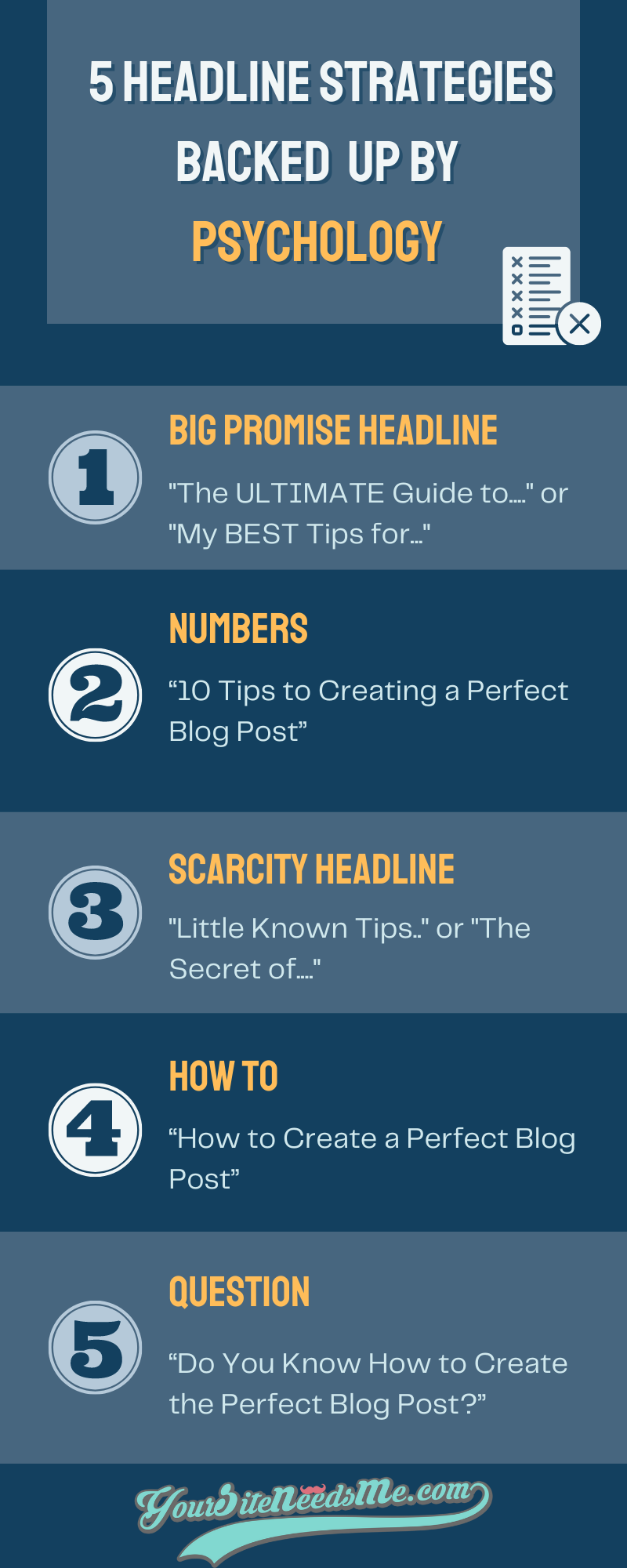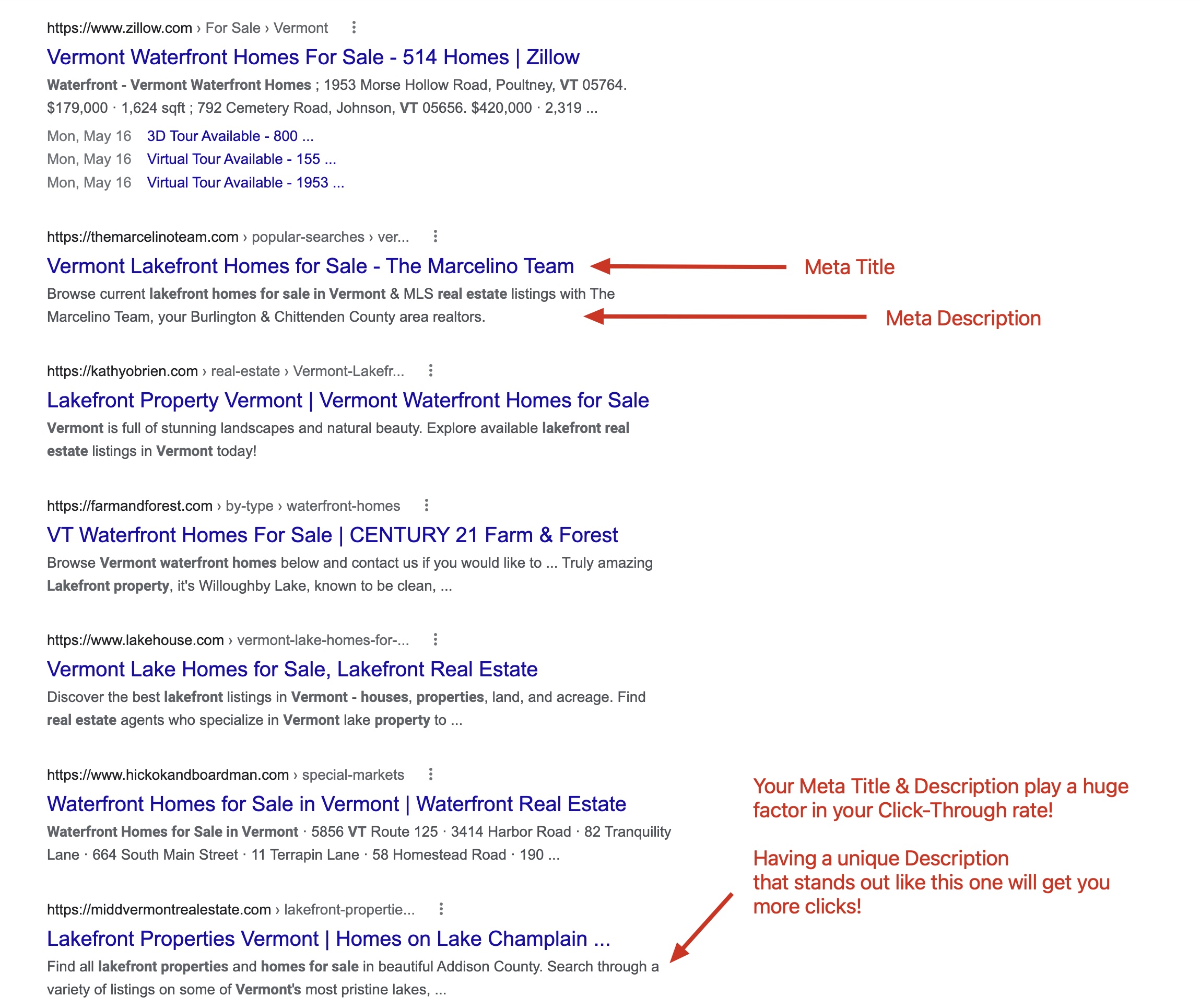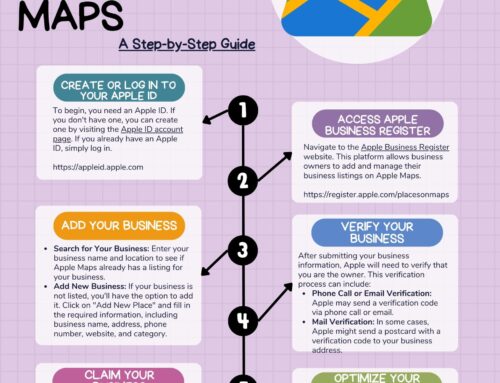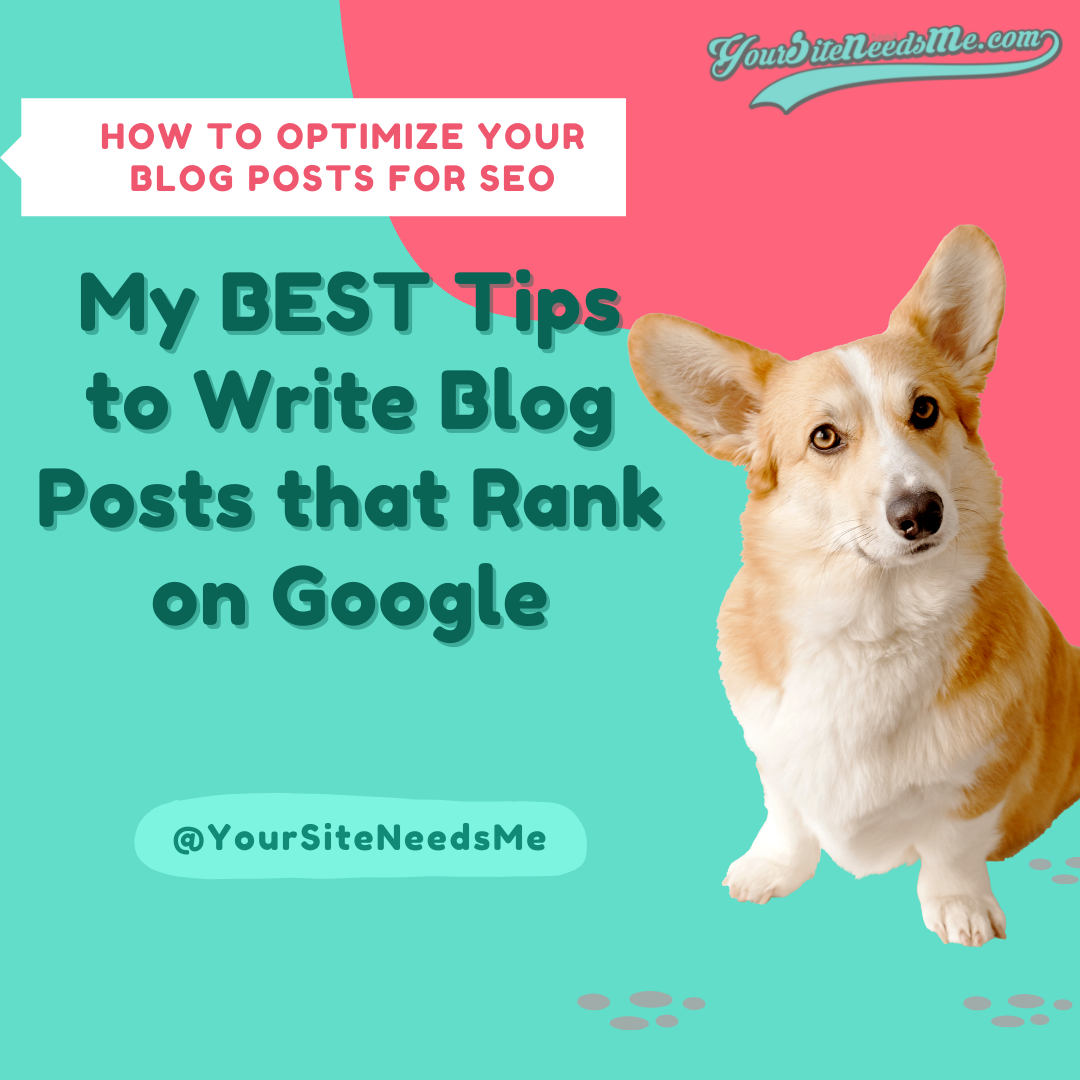 When it comes to writing a blog for SEO, one of the main goals is to get your post to rank on Google’s organic search results so you can beat out your competitors. Being #1 can bring in a lot of traffic and help you grow your business. In this blog post, we will discuss my SEO Strategy and all of the things I recommend to make your blog SEO friendly and optimize your blog for the search engines. By following these tips, you will be writing posts that not only look great and provide value for your readers but also rank high on Google!
When it comes to writing a blog for SEO, one of the main goals is to get your post to rank on Google’s organic search results so you can beat out your competitors. Being #1 can bring in a lot of traffic and help you grow your business. In this blog post, we will discuss my SEO Strategy and all of the things I recommend to make your blog SEO friendly and optimize your blog for the search engines. By following these tips, you will be writing posts that not only look great and provide value for your readers but also rank high on Google!
TIP: Click here to read the SHORT post on How to Write Blog Posts that Rank on Google on my ActiveRain Blog
Blog for SEO: How to do SEO for Blog Content
Before we get into the nuts and bolts of optimizing your blog, let’s talk about the basics of SEO for blogs. First, you need to know that blogs take work. You have to follow the formula to be successful and you have to be consistent. If you have ever talked to me about organic SEO then you will have heard me say – it’s not a race, SEO is a marathon and you are always training for it.
There are two parts you NEED to understand if you want to optimize your blog.
- On page SEO or on site SEO: This is the work you do ON your website and what the majority of this post is about. It is everything you do including on page optimization, internal linking, technical SEO, writing relevant content for your industry or high quality content pages, meta tags and much more.
- Off page SEO or off site SEO: This is the work you do OFF of your website and includes adding your site to Google’s Search Console and submitting your Sitemap, link building (which I do not recommend link schemes – but that is an entirely different article), digital marketing, social media marketing, keyword research, etc.
Both are important and if you want an amazing blog that search engines love then you need to consider both in your SEO strategy.
Are blogs good for SEO?
This is a question that many of our clients ask about when trying to get their real estate website to rank ahead of Zillow & Trulia. The answer is yes whether you are a REALTOR ® or not! Blogs are great for SEO and are the #1 thing we recommend to help you rank higher on the search engines. By following these SEO tips, you can write blogs that will rank on Google AND bring you traffic so your blog is more successful!
Blogging for SEO Truths:
- The most successful blogs have a solid mix of content types.
- Keyword research is paramount to the success of your search engine optimization
- Google loves fresh content. The more you post, the higher your chances of ranking on Google.
- Don’t discount other search engines like Bing
- Pillar Content has longevity. These are big meaty posts that are filled with good information, images/videos and support your main idea or purpose of your blog
- Both Pillar Content and other interesting topics should be combined to get the maximum ROI
- Only a handful of posts will earn you the most traffic. Leverage them!
- Use keywords related to your Focus Keyword
- Internal Linking to your pillar content or other important posts can ‘share’ google juice to those posts
- Page Speed is key to SEO. If your site is slow, you will lose search engine rankings
- Keyword Stuffing is BAD M’kay?
- Organic Traffic will get you a better lead
- Getting your site to rank as a Featured Snippet in Google Search Results will reap more traffic
Key Blog SEO Components of a high ranking Blog Post
This is my search engine optimization secret sauce or my ‘recipe’ if you will, for writing an informative post that ranks highly on the search engines. If organic traffic is your goal then each of these is important but the recipe works best when you put them all together. Keep in mind that as technology advances and time goes on, these items will change as well! So while blog SEO tips are not set in stone, and may change over time, they are a solid foundation to build upon.
- Keywords (and related keywords) & Topics
- Engaging Blog Title
- Reader Experience
- Linking – Internal Linking and External Linking
- Images & Visuals
- Categories & Tags
- Meta Description/Excerpt & SCHEMA
- Sharing to Social Media
- Track Performance
- Revisiting & Repurpose Old posts
- Blogging Tools & Plugin
Find the BEST Relevant Keywords & Topics
Choose a good topic and do your keyword research. Guessing is the worst form of blog SEO. The most successful bloggers do their keyword research first and then write their blog around phrases their target audience is already searching in the search engines.
Your blog post title is just as important to optimize your blog for SEO success. Once you do your keyword research and decide on a focus keyword you should do some more digging to see what topics are trending so you can create quality content around them. You can also reverse the process and research the topic first then find the keywords that go with it. Choosing a keyword OR a topic that gets ZERO activity in the search engines is going to get you ZERO activity. You know the saying “If you build it, they will come?” That only works for baseball. If you create content about what they want to read about, they WILL come.
- Use a Topic Research Tool like SEMRUSH or QUORA to find a good topic that is trending in the search engines now
- Use Google Keyword Planner Tool to find related keywords. Long-tail keywords with low competition are the most successful at getting to page 1 search results fastest.
- Find a PRIMARY Keyword phrase and a similar SECONDARY Keyword phrase and plan your blog SEO around BOTH.
TIP: If you want more organic traffic, you should also do on page SEO on all of your web pages
Plan your content based on keyword research
While you are writing, use your keywords throughout the blog post. In order for Google to understand what your blog post is about, you need to use your keywords a certain number of times based on the word count. This is where an SEO Tool can come in handy.
- Use your PRIMARY keyword in the first sentence toward the beginning and in the last sentence toward the end.
- Use your keywords in the headings and subheadings
- Use your keywords a few times in the copy depending on your word count. Do NOT Keyword stuff.
- Use a blog SEO Tool like Surfer SEO or for WordPress All-in-One SEO or Yoast SEO
- Write interesting and keyword-rich titles: Your title is one of the first things that Google looks at when ranking your blog post. Make sure that your title is interesting and contains keywords that are relevant to your topic.
- Include a keyword in every image & links’ title tag
- Content should be readable, natural, and sound like you talk.
- Google pulls a search result based on your location so think about writing valuable content surrounding a local search
Hot Blog Topic Ideas
Pick a topic that is going to generate interest in your readers! If you don’t know what topics to write about then use a topic research tool like SEMRUSH. The most successful topics include:
- Seasonal: Holidays & Events and TRENDING
- Local: Spotlight on local businesses, Top Pizza Take-out, Places to get a good cup of Joe, Highlight a Neighborhood, Local Events & Things to do
- Superficial: Tips, Travel, Lifestyle, DIY, Recipes
Use an Effective Blog Post title to Get a Higher Click-Through Rate
Believe it or not, there is an actual formula to writing a good title or heading to boost your organic search engine optimization. The title of your post is typically the FIRST thing your readers will see and is the part that is responsible for getting them to click through in the search engines and on Social Media and read the rest. Additionally, your Title or Headline is also what will determine how successful it is at being shared across Social Media. The success of your post can rise or fall depending on the title.
*The ideal headline length is 11 words and 65 characters according to BuzzSumo’s article The Most Shared Headlines Study
Useful Tips for Writing a Blog Headline to get more Clicks:
According to Stacy Cavagnetto of Koozi, you should not disregard your blog’s headline. The headline is what will catch the reader’s eye as they read your post in the “F” shape so it is critical in catching and keeping your reader engaged.
- Readers love numbered headlines. Ex: 10 Link Building Tips for a Successful Blog
- Use descriptive words such as best, top, useful, helpful, most, critical, etc. Ex: BEST Keyword Research Tool you cant live without!
- Include rationale words such as actionable tips, tricks, reasons, hacks, etc. Ex: 4 Tricks to Optimize your blog
- Trigger Words are compelling like DIY, Why, How, Exclusive, Better, Interesting, Now, New, etc. Ex: Why Link Building could Harm your Blog Optimization
- Make a promise. Ex: 5 Tricks guaranteed to Make your Blog SEO Friendly.
- Don’t forget to use one of your keywords if possible. Ex: Your Focus Keyword could Be Losing You Clicks
Make your blog easy to read
Search engine data supports that how you write is almost as important as what you write. According to ReadabilityMatters.com Readability is about how easily the audience can read and understand the content of your blog. If you want the search engines to rank your blog content higher then you have to make sure your blog content is readable.
Blog Readability rule of thumb:
- Include an Intro, Main copy, and a Conclusion
- Remember the ‘F’ Shape and account for that
- Including good Headings & Subheadings (points)
- Use Lists to condense ideas – Bullet or Numbered
- Include Visuals – A photo goes a long way but a Visual goes longer!
TIP: Search engines love showing ‘snippets’ of bullet point lists, so using bullet points or numbered lists in your content can result in being featured at the top of the search engine as a featured snippet!
The “F” Shape: How your Readers READ your blog
Readers READ your content in an ‘F’ shape down the page, scanning for information as they go and stopping at the parts that interest them. This is important because knowing how a reader scans your content will help you write in a way that will engage them longer!
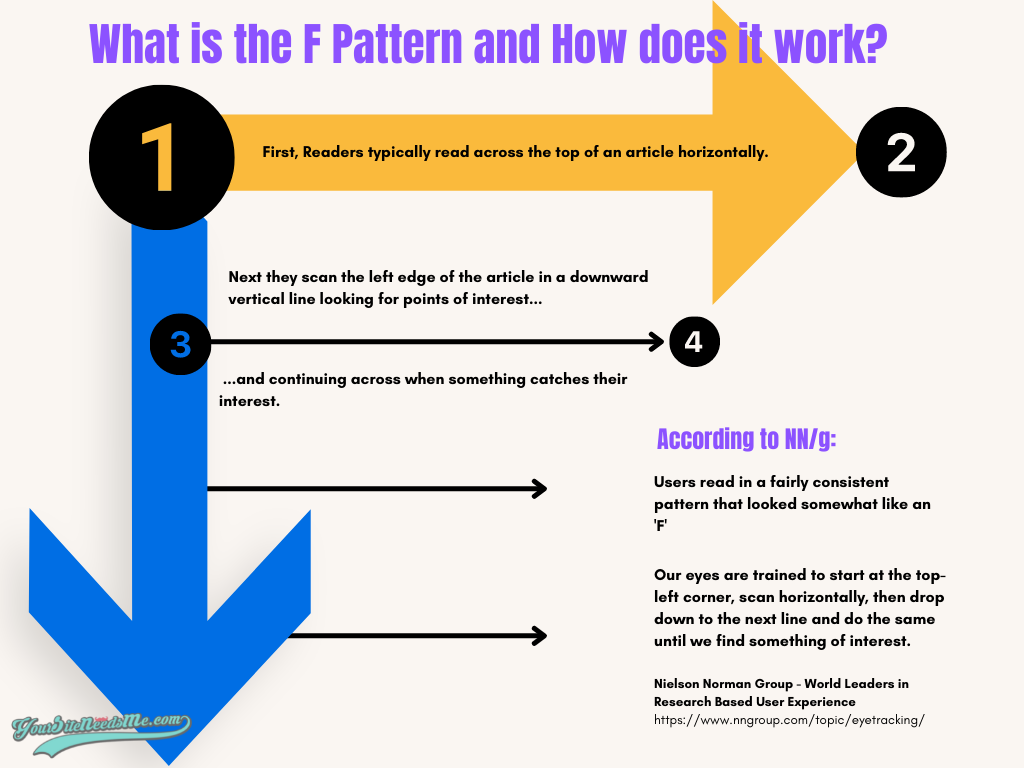
TIP: HotJar heatmaps is great for tracking user interaction.
What are internal links?
Throughout your post, you should use keywords to link to other blog posts or important pages on your site. Not only does this help with SEO by giving search engines more context around what your website is about, but it also helps readers by providing easy access to related content. Interlinking or ‘internal linking’ is a way to link to other blog posts or important pages on your site.
Here are some tips for how and when to include internal links in your blog posts:
- Use your content to link to other important pages or pillar content.
- Link to ONE authority site. Be sure to open the link in a new window!
- Near the end of the article in the conclusion link to a related blog post. “If you liked this blog post, you should read “INSERT RELATED POST“.
- Each link should include a title tag describing what the link is
- Don’t forget to add Call-to-Action and a link to your Contact page
Every blog is a chance to boost another blog or page on your site. Only a handful of blog posts will earn you the most traffic, so each blog you write is an opportunity to capitalize on that.
Are Blog Images good for SEO?
Images and visuals are one of the most important aspects of a blog post. People engage with visuals 60,000X faster than text according to this study by HubSpot.
Include at least one image per blog post, but more if you can.
- Blog Image with Text on it – We LOVE Canva
- Make sure your image is high quality and relevant to the blog content.
- 1 or 2 images throughout – Royalty Free Stock photography sites
- Use a VISUAL or INFOGRAPHIC if you can! Even higher engagement
- Blog images must include a title tag and an alt tag
How do I use Blog Categories & Tags for SEO?
Organizing your blog posts into categories and tagging them accordingly can help increase your SEO.
Categories are the broad topics that you write about on your blog. Think of them in relation to a newspaper or a bookstore and how they are organized. For example, if you have a blog about real estate, some of your categories might be Buyers, Sellers, and Community Information. Search engines love categories and often your categories will rank and bring you valuable website traffic!
Tags are the specific keywords or phrases that describe each individual post, are more detailed, and can include keywords. They are also similar to hashtags. Some example Tags might be First-time Homebuyers, staging your kitchen, Boca Raton.
TIP: Make sure you fill in the Meta Descriptions for your Categories and Tags!
What are those Pesky Meta Titles and Descriptions?
Your meta title is the title that appears in search engines. It should contain your title (hence the word Meta TITLE), be engaging (see headlines that get clicks above) and be no more than 60-70 characters long and include your primary keyword.
Meta Descriptions are the brief description used to describe the content of your blog post that appears below your blog post’s title on search engine results pages (SERPs). It is what shows up in the search engines under your title and the FIRST piece of content that will get readers to CLICK through and should be between 150-160 characters long and further elaborate on the topic.
- Write a Meta Title that will GET CLICKS – Go back and read how to write an effective Headline or Title if you forgot how to do this already
- Write a compelling Meta Description that is 160 characters or less
- Mind the Competition – check them out to see what they wrote in their Meta Description and Meta Title!
- Use a Keyword in your Meta Title and Meta Description
- Copy your Meta Description to your EXCERPT!
Why Schema is important to search engine optimization
What is Schema you ask? Well, simply put Schema (also known as structured data, rich snippets, or microdata) is a type of structured data markup code supported by Google that you can add to your website to help search engines understand your content better and is a major factor in getting Google Juice – or getting your blog post to rank higher on Google.
Schema is especially important for SEO because it helps search engines return more relevant results to users. It also helps users find the right information on your site more easily.
There are multiple types of schema but for the purpose of keeping this post shorter than the Lord of the Rings book, we will focus on Article Schema or more specifically BlogPosting Schema.
Adding schema to your website or blog articles can be fairly easy when you use an SEO Tool or plugin. All you have to do is fill in the blanks to tell Google what your post is about and the tool will do all of the hard work for you. There are plenty of WordPress plugins including All-in-One SEO and Yoast SEO that are very simple to use and even work dynamically to pull the information out of your post for you and auto-generate it. I would highly recommend using these types of tools to generate your article schema vs trying to figure it out yourself.
Here are some of the benefits of using schema:
- Helps search engines understand your content better
- Can help your website rank higher in search results
- Makes it easier for users to find the right information on your site
- Can increase the click-through rate (CTR) to your website
The Effect of Social Media on BLOG SEO
The success of your blog stems not only from the readers you get from the search engines but also from its success on Social Media. The more people that share your blog post the more Google juice you get!
- Social media increases the lifespan of your post
- Social Media can make a blog post go VIRAL
- Shares, Likes, and Comments are vital signs to Google that boost your Google Juice
- Encourage Readers to SHARE your post on Social Media
- Make sure you fill in the Social Media Snippets
- Use a plugin that automatically includes sharing indicators so your blog is easy to share to all social media outlets
- Don’t forget to share it on YOUR social media pages!
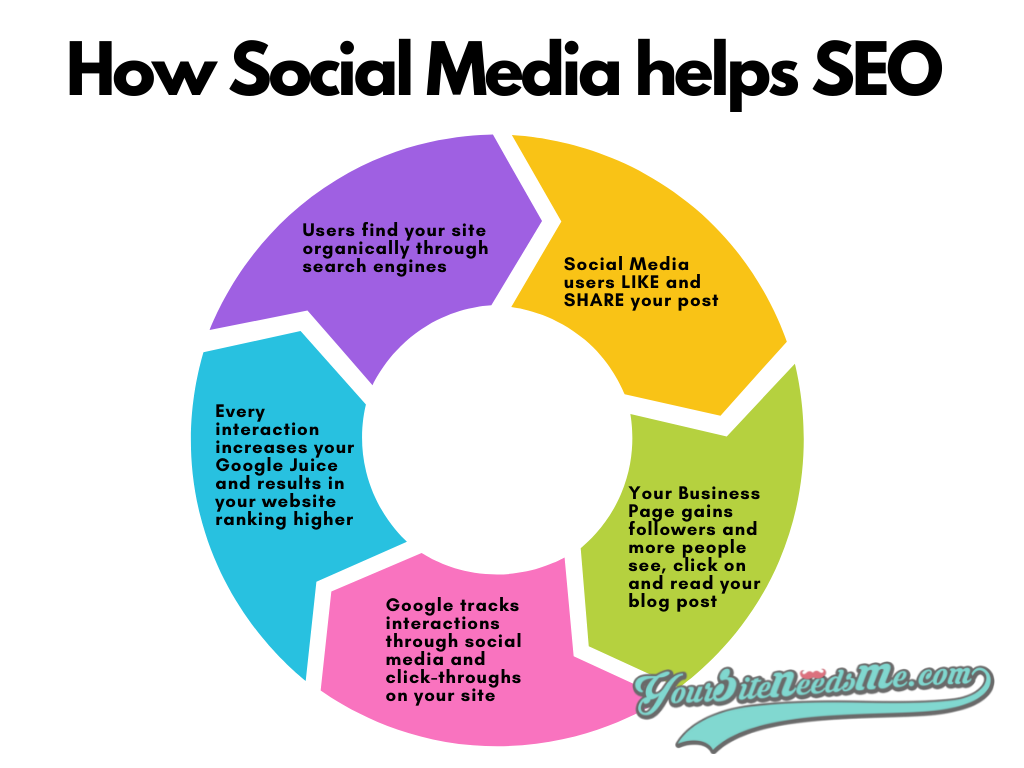
Don’t forget your Technical SEO!
Technical SEO are the things that you can do (and SHOULD be doing) on the tech side of your website that will benefit it as a whole. These are mostly part of your design and how your site is built but should not be discounted. Just one of these can greatly increase your site rank and reward you with higher positioning on the search engine results page.
Here are the most important technical things you need to be doing to optimize your blog:
- Use SSL. Make sure your site is secure and starts with ‘HTTPS’
- Mobile Friendly. Users search on mobile devices more than any other device. Make sure your site is MOBILE friendly or you can forget about getting to #1
- Check your site speed. If your site does not load quickly then you are hurting your chances for more traffic. Search engines, and in particular Google, prefer fast sites. Page speed is a critical factor and an important ranking signal. This is one of the main reasons we use WPEngine and Cloudflare to host our client’s sites!
- Create an XML Sitemap and link to it in your Footer. We use a WordPress plugin to create our XML sitemap because it’s easy and generates it automatically.
- Add Schema or Structured Data Markup to your site. This helps search engines better understand what your site is about. You can use Google’s free tool to test your structured data and make sure it is working properly
- Make sure you have added your site to Google’s Search Console & Bing Webmaster Tools and submit your sitemap to both so they will crawl your site and be notified when you create a new blog post.
How do I know if it’s working?
Track your performance! Writing a blog post without monitoring its performance is like making a grilled cheese sandwich without the tomato soup. You just don’t eat one without the other!
TIP: If you want to show up in Google then you MUST use Google’s tools!
- Make sure you have set up Google Analytics, submitted your site to Google Search Console, and connect the two.
- Check it often to see how your blog posts are doing.
- Set up Monthly Reports to be emailed to you in Google Analytics by clicking the EMAIL icon on the corner of any report you are viewing.
- After publishing your post, go to Google Search Console and check that it has been indexed. If it hasn’t then request indexing.
- Once it has been indexed go to the PERFORMANCE tab and check the posts’ performance to see how it is doing
- Pay attention to clicks and Bounce rate – adjust your Meta Description to get better click-throughs and adjust your content to get better-staying power
What does it mean to Re-Purpose an old blog post?
Blogging isn’t always about writing something NEW. Sometimes it is about RE-writing something old! Re-purpose old blog posts by giving them a fresh coat of paint! It can help with SEO and it can help you re-engage your audience. Give it a try!
Go look at your post in Google Search Console and see choose old posts that performed well and decide what can be done to deliver a fresh experience!
Here are a few things you can do that will “re-purpose” those old posts:
- Re-write key parts of it from today’s perspective. Polish it up with new information that updates it so it is in line with what is going on TODAY!
- Write a FOLLOW-UP Post. Something that is similar but with up-to-date information
- Make a Video to go along with your post and post it to YouTube AND embed it into the post
- Make it into a Podcast
- Re-post it to Social Media
- Add new Images
My Favorite Blog and SEO Tools
Depending on what type of blog you are writing on or the platform your website is built on, you have many free tools at your disposal that you should be using to be as successful as possible. I also highly recommend you subscribe to some SEO Blogs and stay current on the newest changes in search engine algorithms. SEO Plugins and content marketing strategies.
Blogging Tools:
- Tracking Tools: Google Analytics, Google Search Console & HotJar.com’s Heatmap
- Topic research Tools: Google Trends, SEMRUSH or Quora Content Strategy or BuzzSumo.com
- Graphic Tools: Canva.com
- Blog Topic Generator: HubSpot
- Heading Generator Tools: BlogAbout, FatJoe, HubSpot and SEOPressor
- A Calendar to set up a blogging schedule like Google Calendar
- Keyword Research Tools: Google Keyword Planner, Wordstream, Ahrefs Free Keyword Planner
- Readability Tool: Hemingway
- Grammar Tool: Grammarly.com
- Royalty-Free Stock Photography like Shutterstock, Unsplash.com, Pixabay.com, and Pixels.com
- Page Speed: GTMetrix & Google’s Page Speed Insights
WORDPRESS SEO Plugins we use:
- We love SEO Plugin like YOAST or All-in-One SEO plugin or Squirrly
- SEM Rush Writing Assistant
- Google XML Sitemaps WordPress SEO Plugin
One last tool – or rather a HUGE blogging SECRET!
I stumbled across this awesome tool not long ago and it blew me away. It’s an AI tool and it literally WRITES blog posts for you. I mean that in the sense that it helped me write this post. Now I am a bit more anal and controlling so I couldn’t let it write my entire post….but ladies and gents, this thing DOES write entire posts and pages. It does have a bit of a learning curve but I think taking a few hours to learn it so that you can quickly generate good ORIGINAL content for your site in the form of pages AND posts….is worth it. I bought it and I also bought the SEO tool that works with it because I wanted all of the SEO juice I could get and with the two combined it claimed it could help me write an article to get to page 1 of Google. This article is my first time using it and I am impressed so far. I will update you in a month to let you know it did what it said it would do and got me to page 1 of Google. Stay Tuned…..if it works then it’s probably going to be my #1 recommended SEO tool for Bloggers.
Is there an easier way to SEO my blog posts?
Uh, sure…..hire someone! The bottom line is if you want your blog posts to rank and you’re already spending time writing them, then putting in a little extra time to make sure you are writing them BETTER is worth it and will reap HUGE rewards. AND the good news is that as you start to do it, over time it will become second nature and you will automatically use these methods as you write so it will be easier! After all, practice makes perfect!
Interested in a new website? Find out why YourSiteNeedsMe has over 60 🌟 5 Star Reviews on Google! Give us a call or check out our real estate website services today! Charra Hammett 517-917-0582 (Call or Text)
Online Marketing Tips
We’ve been in the online website marketing business since 2004 and we love what we do! If you are looking for more tips, check out our How to Make a Google Business Page for your Company in 7 Easy Steps or How to Add a Business to Apple Maps (For FREE!): Step-by-Step Guide!
If you need some tips on how to go viral then check out my blog post on Unleashing the Power of Viral Marketing Campaigns: 7 Tips to Make Your Blog Posts Go Viral plus Strategies, Tools, and Examples. Need help with your websites SEO? Check out My 3 BEST Real Estate Website SEO & Lead Generation Tips.
YourSiteNeedsMe is a Real Estate Websites WordPress Designer for REALTORS and enjoys writing blog posts about hot topics and fun things to do.


